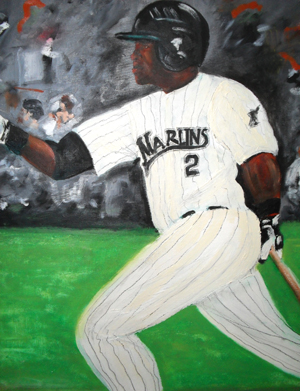|
<This makes a HUGE
difference.
Pitchers need to work
on establishing and controlling their fast ball and be able to change
speeds on it simply by changing the grip on the ball. Good fundamentals
and smooth mechanics are the goals.
Pitching requires the
entire body, not just the arm. Warm up and in practice throw, two-seam
fastballs, four seam fastballs and change-ups to creates familiarity and
get the right feel on the ball. Then move on to throwing some curves,
sliders, knucklers, or other pitches such as splitters, fork ball, etc
after you are warmed up.
Good pitching mechanics
A pitchers mechanics
should be fluid and become natural to the throwing motion. Each delivery should appear exactly the same to the hitters regardless
of what pitch is thrown or if it's from the stretch or the wind up.
Pitching
forms
Wind-up or no wind-up
The
correct arm angle must first be determined. Pitcher's need to find the
best angle for all their pitches Next practice throwing all pitches from
this angle (except on over hand curve)
Throw a few pitches of each to practice location.
Side-arm Delivery
Strike zone is harder
to hit with a side arm delivery. Over hand and 3/4 strike zone is the easiest to throw, and less
stressful to the arm in general.
The
Wind-up : (Situation will decide)
Pitchers need to learn
to use their entire body to throw. This loosens up pitchers body and
relieves arm tension by using the entire body to throw with. One fluid
motion is the best wind up delivery. The wind-up can also confuse the
batter with added movement. It also helps pitchers hide the ball from
the hitter longer during the delivery. The goal is to develop a smooth,
consistent rhythm for consistency of every pitch.
Correct throwing
mechanics can reduce injury and increase longevity.
Wind up problems:
Coordination may not
be good or not smooth. Is not properly hiding ball in wind-up or has a
herky-jerky motion instead of smooth, one motion delivery. Hiding ball
during wind-up behind leg or keeping the baseball in the glove as far
back as possible are the best options here.
No wind-up process.
Step, come to a
complete stop, then use the exact same mechanics as in the
wind up. Push down
from the top of the rubber, (sit), keeping the baseball in
the glove’s web, wrist
hidden in the glove, deliver one smooth motion to the plate.
Avoid Tipping pitches:
1. By changing arm
angles.
2. Using different
pump movements.
3 Reaching back
further on certain pitches.
4. Using higher or
lower leg action.
5. Turning wrist on
curve (shows white)
6. Holding ball in
glove differently.
7. Fingering ball
prematurely or not hiding it properly.
8. Shaking off to the
same pitch.
Set positions
- From the
wind-up, take signs on rubber, ball inside glove. From the stretch,
pause at least one second after coming set, then throw. No exaggerated
leg kick delivering ball with runners on base. Vary time intervals on
pitches to the plate to keep hitter and base runners off balance.
Wind-up and Stretch
Techniques should be
almost the same in the stretch as in the wind-up except cutting down leg
kick and speeding up delivery slightly from time to time
Causes of Poor Control
Poor
control can be caused by several factors or just one that is out of
line.
The
following are the most common poor control issues:
-
Poor mechanics or grip techniques.
-
Taking eyes off target or too early.
-
Improperly landing on the heal.
-
Throwing across the body or locking the hips or knees on delivery
-
Erratic, varying arm angle at release point, inconsistent mechanics.
-
Moving around on rubber too much. Try to stay in one spot, right
side for right hand hitters - left side for lefties. Each pitcher
should find whatever works best on a given day. Don't be afraid to
adjust.
-
Over and under striding can also lead to injury and control
problems.
-
Poor physical conditioning shows up late in the game.
-
Pitchers must run everyday.
-
Excessive body movement or herky-jerky motion causes ball to move
|


